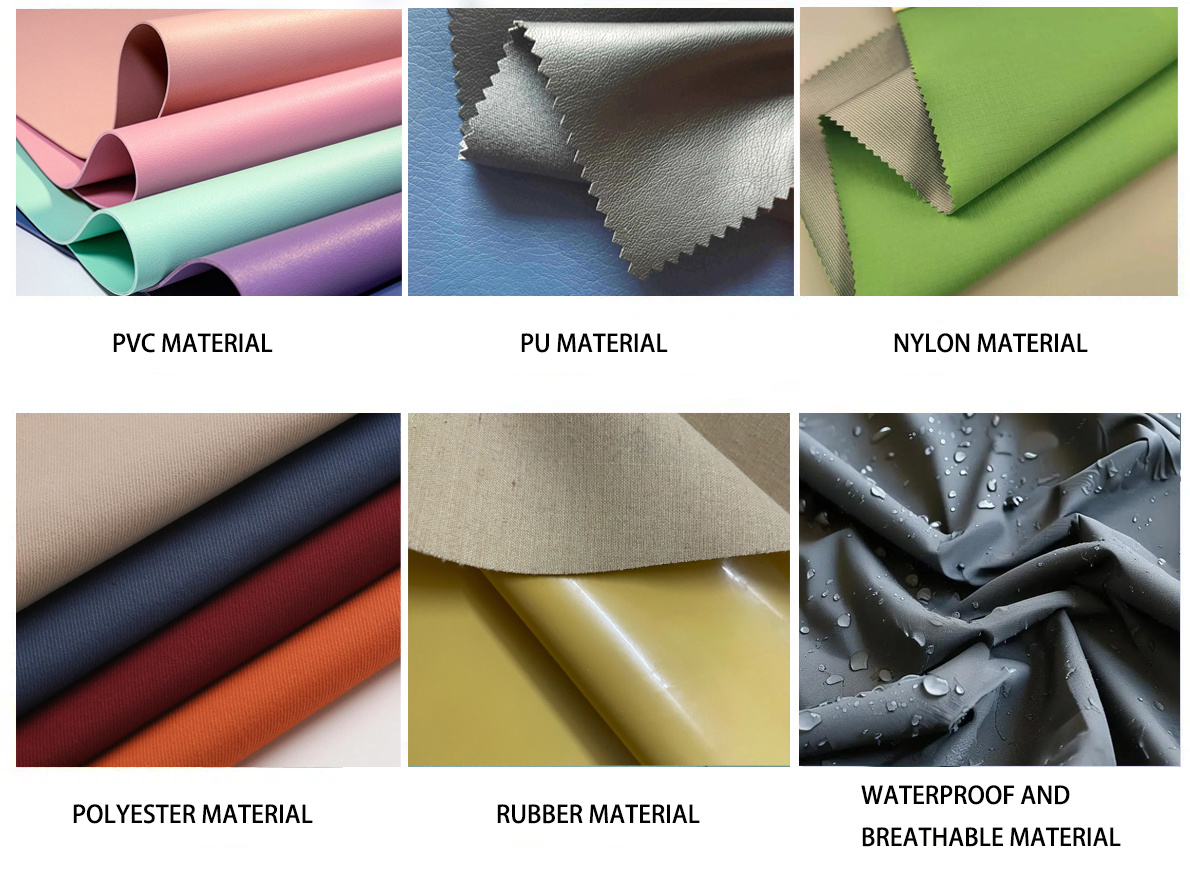Comprehensive Analysis of Raincoat Cloth Materials: raincoats are made of which material?
2025-07-28
Comprehensive Analysis of Raincoat Cloth Materials: raincoats are made of which material?
As the core of outdoor protective gear, the choice of raincoat cloth material directly affects the user experience. raincoats are made of which material? This article will delve into the characteristics of six mainstream raincoat material fabric names, helping you make an informed decision.

PVC (Polyvinyl Chloride), with its fully waterproof properties, has become the material of choice in industrial protective fields. This plastic-based material completely prevents water penetration and offers excellent tear resistance. In terms of cost, PVC raincoat material costs only 15-30 RMB per square meter, making it ideal for short-term use. However, its lack of breathability may cause discomfort due to heat buildup, and it has poor environmental properties, requiring special disposal after use.
Polyurethane materials maintain waterproof properties while achieving partial breathability through micropore technology. The latest PU coating technology increases water pressure resistance to over 8000mm, while maintaining a breathability of 3000g/m²/24h. This material is particularly suitable for daily commuting and cycling. While it is 30%-50% more expensive than PVC, the comfort level is significantly improved.
Polyester/nylon base fabric combined with PU or Teflon coatings offers both lightweight and waterproof properties. Fabrics using DWR (Durable Water Repellent) technology can achieve an initial waterproof rating of 4-5 levels, but regular maintenance with specialized care agents is necessary. A jacket made from this material typically weighs only 500-800 grams, making it the top choice for mountaineering enthusiasts.
Traditional rubber raincoats remain unbeatable in waterproof performance, capable of withstanding water pressures of over 10,000mm. Modern synthetic rubber has improved weather resistance, maintaining stable performance in environments ranging from -30℃ to 50℃. While each piece weighs 1.5-2kg, it remains essential equipment in specific industries such as fisheries.
High-end materials like GORE-TEX use ePTFE microporous membranes to achieve waterproof breathability. These materials have a water pressure resistance exceeding 20,000mm and a breathability of up to 10,000g/m²/24h. However, they come at a cost, priced 5-8 times higher than ordinary materials. Expert advice: hand wash using neutral detergent to extend the lifespan.
Bio-based PU and recycled nylon are rapidly emerging as eco-friendly materials. Currently, the price of environmentally friendly raincoat cloth materials is 20%-40% higher than traditional products, but their carbon footprint reduction can reach up to 60%. Some leading brands have achieved 100% recyclability, driving the green transformation of the industry.
Shopping Recommendations:
- Short-Term/Temporary Use: PVC Raincoats
- Daily Commuting: PU Coated Raincoats
- Outdoor Sports: Composite Coated Fabrics
- Professional Work: Rubber Raincoats
- High-End Demands: High-Tech Fabrics like GORE-TEX
- Environmental Considerations: Recycled Material Raincoats
With the development of material technology, future raincoats will evolve towards being lighter, more eco-friendly, and smarter. Consumers should select the most suitable raincoat cloth material based on their actual usage scenarios and budget.
Previous Page
Previous Page:
Recommend News









